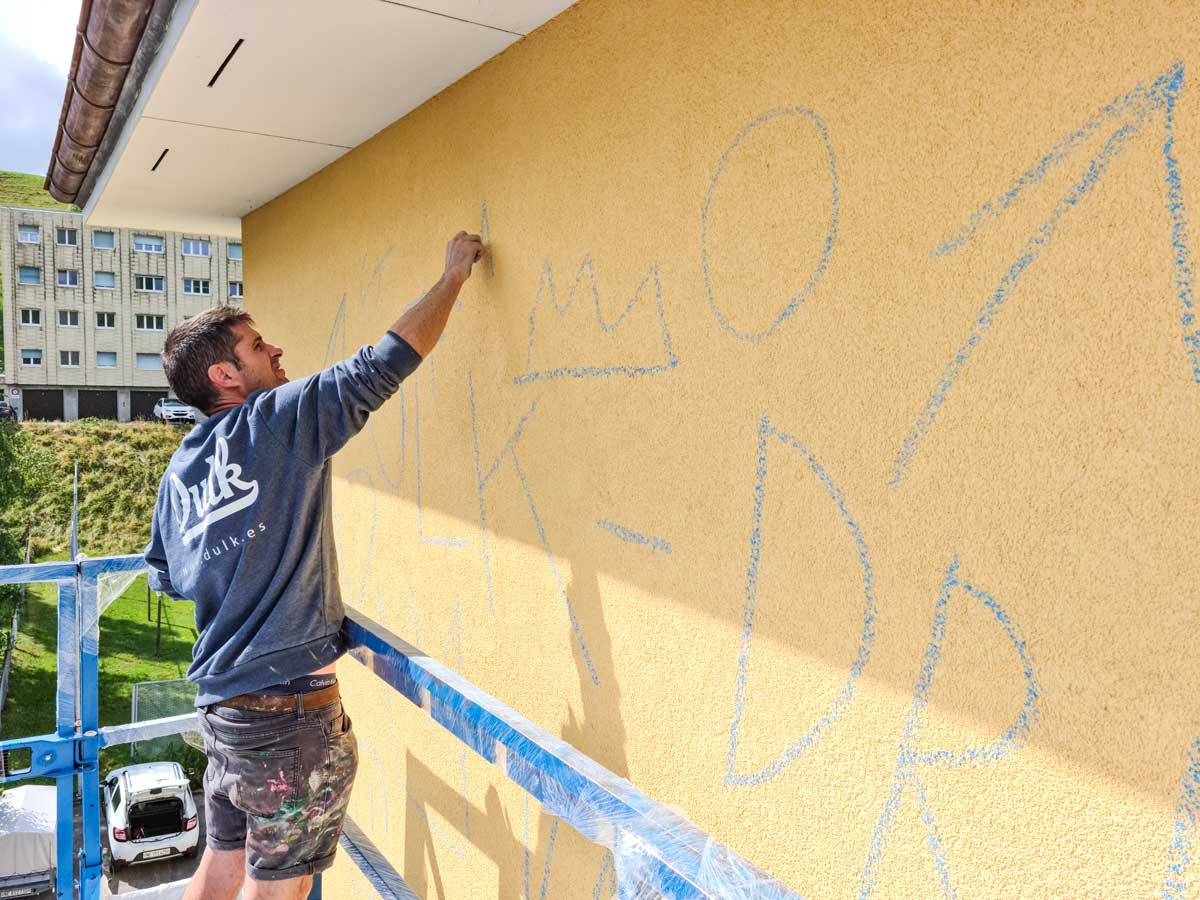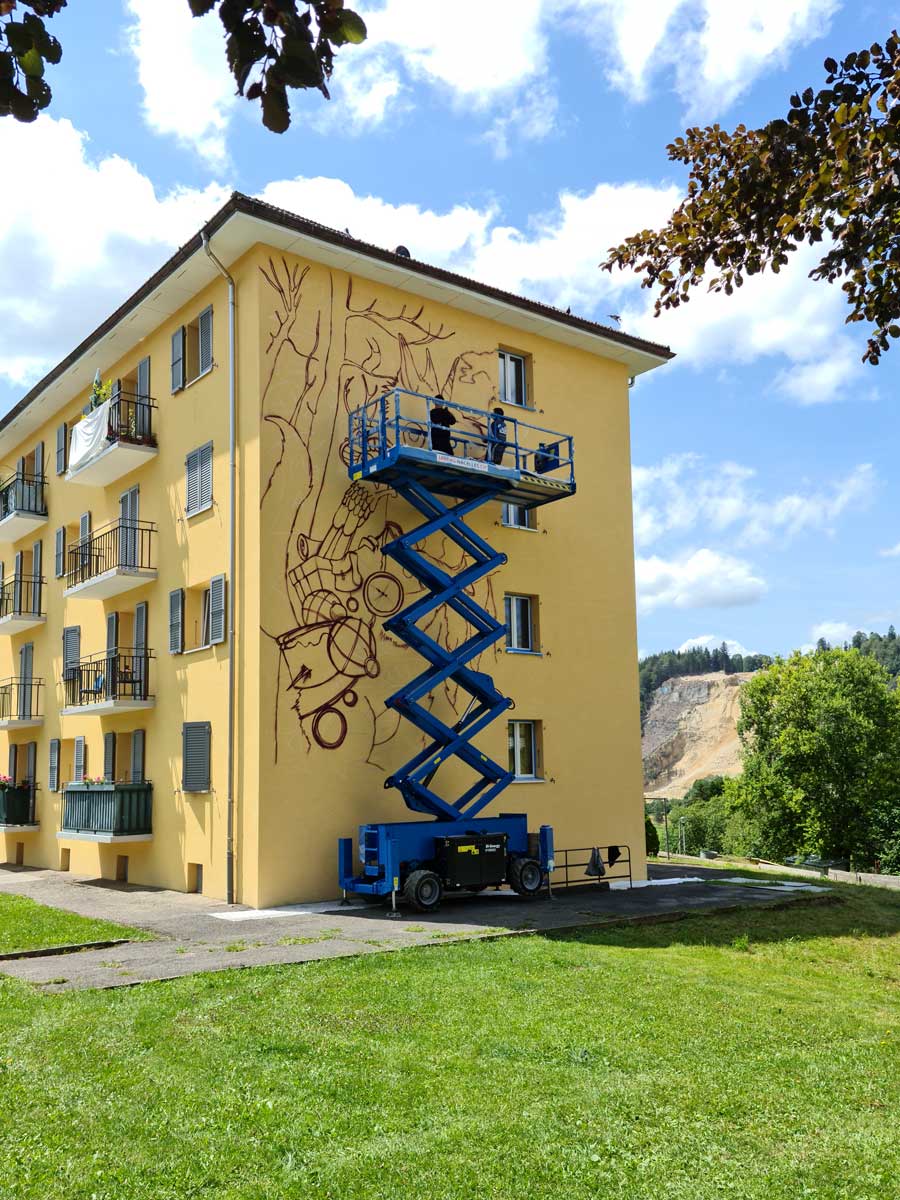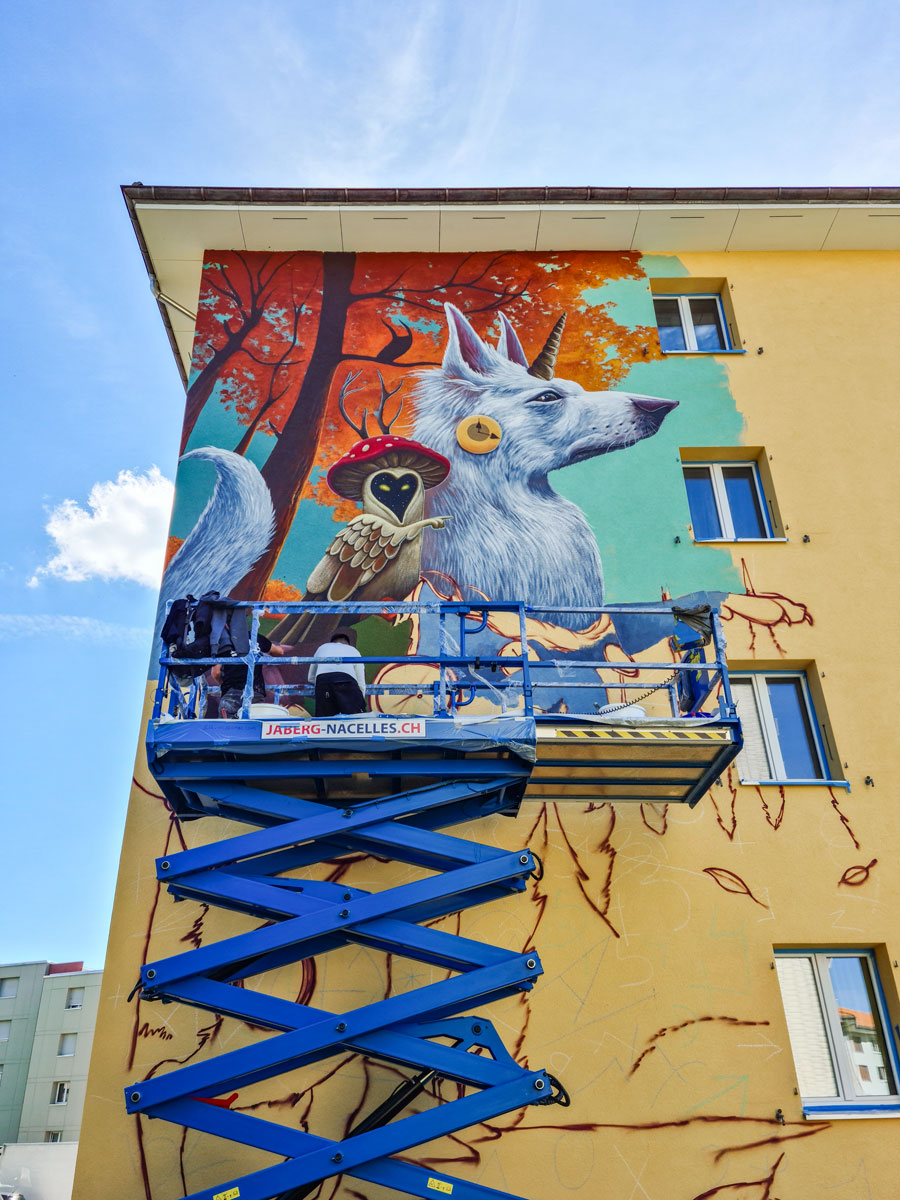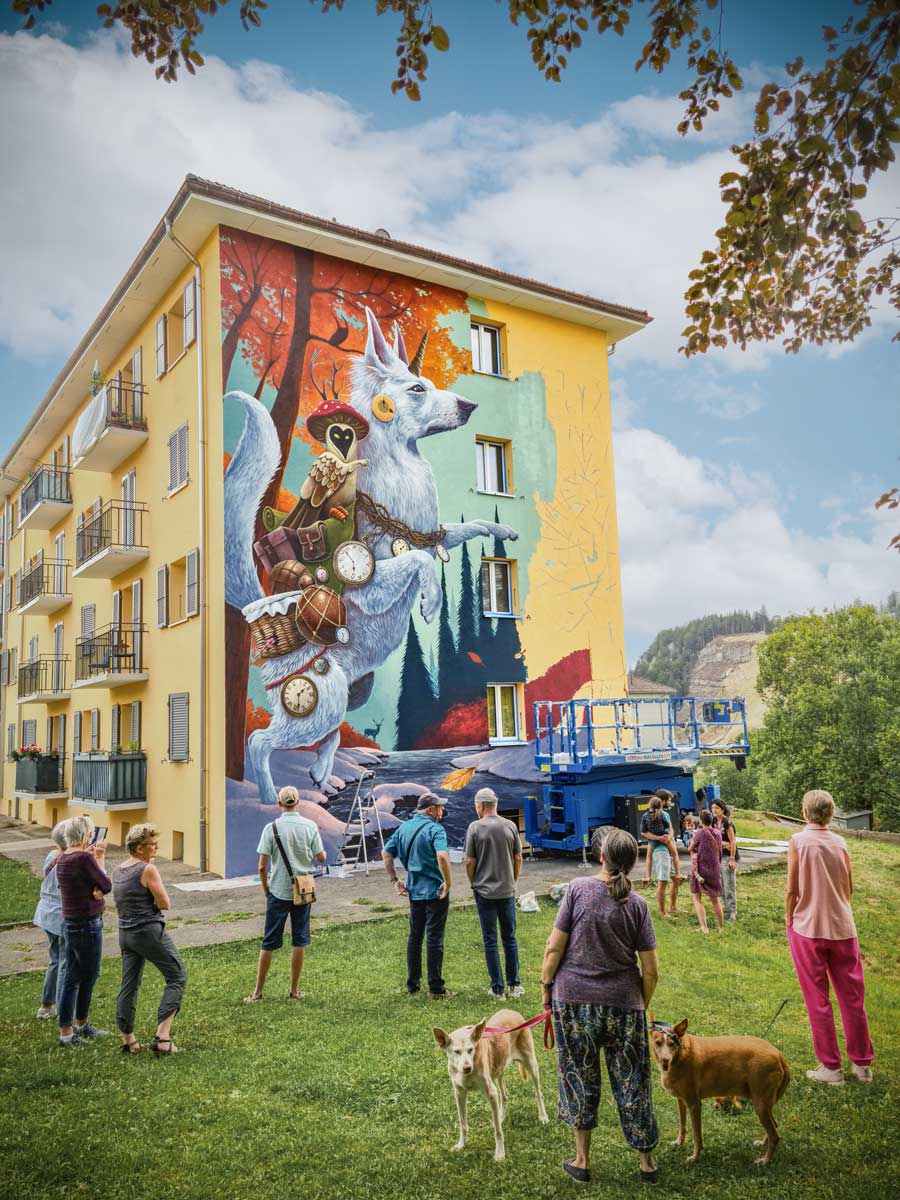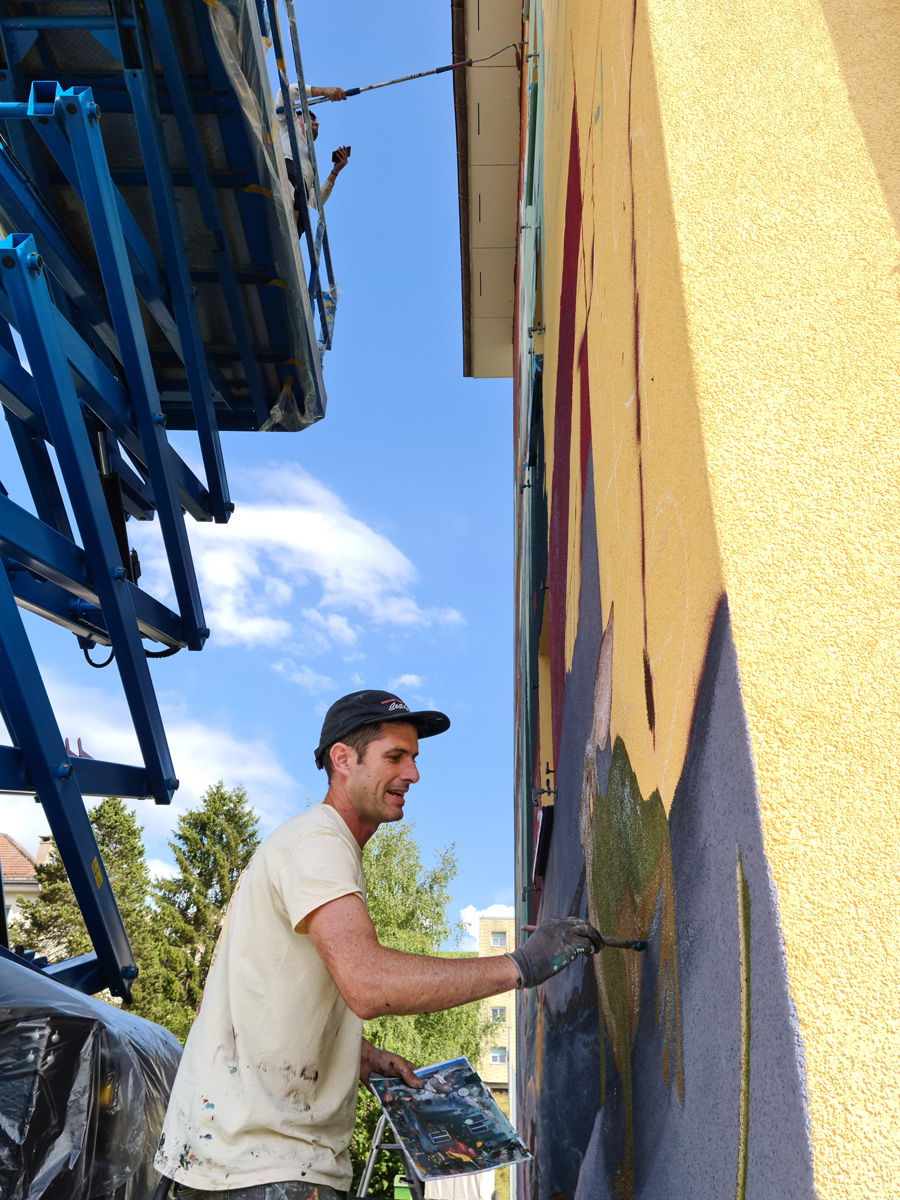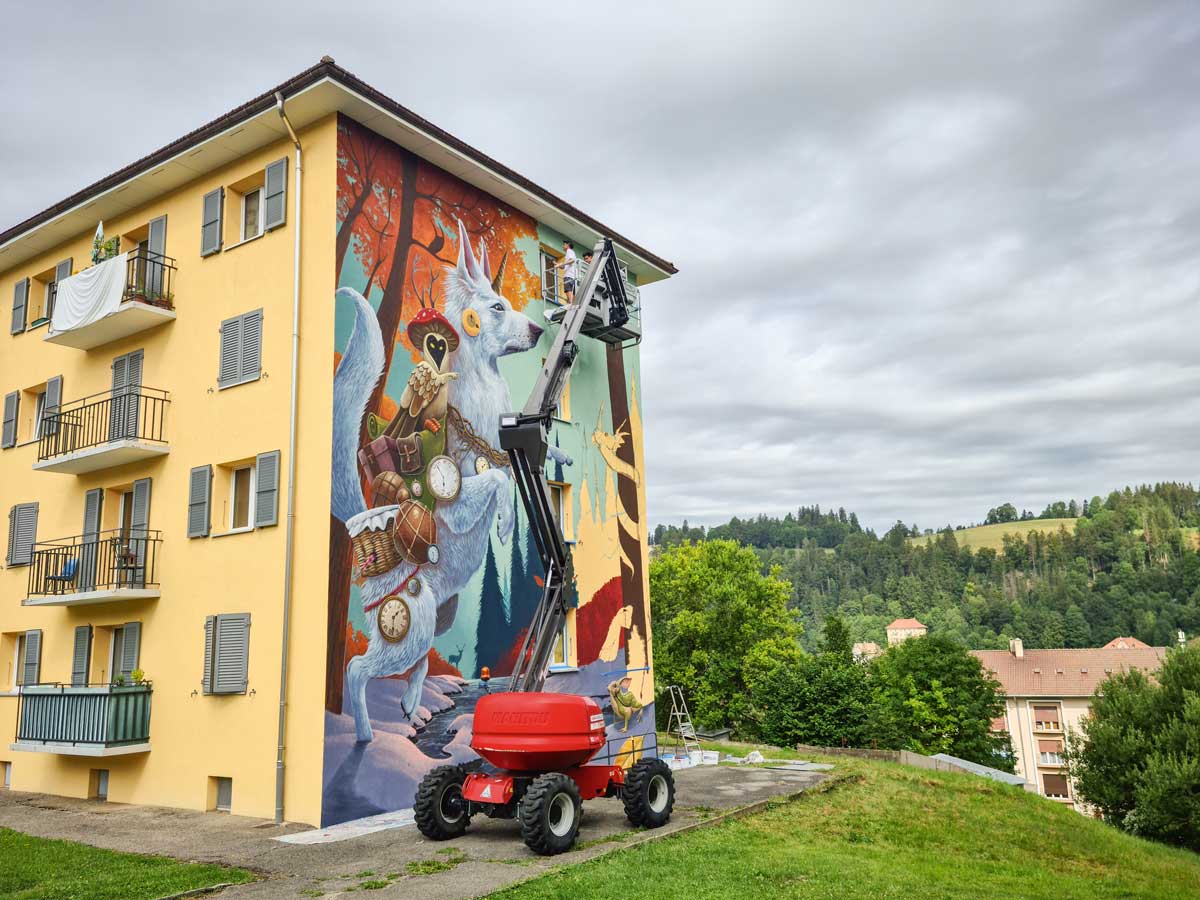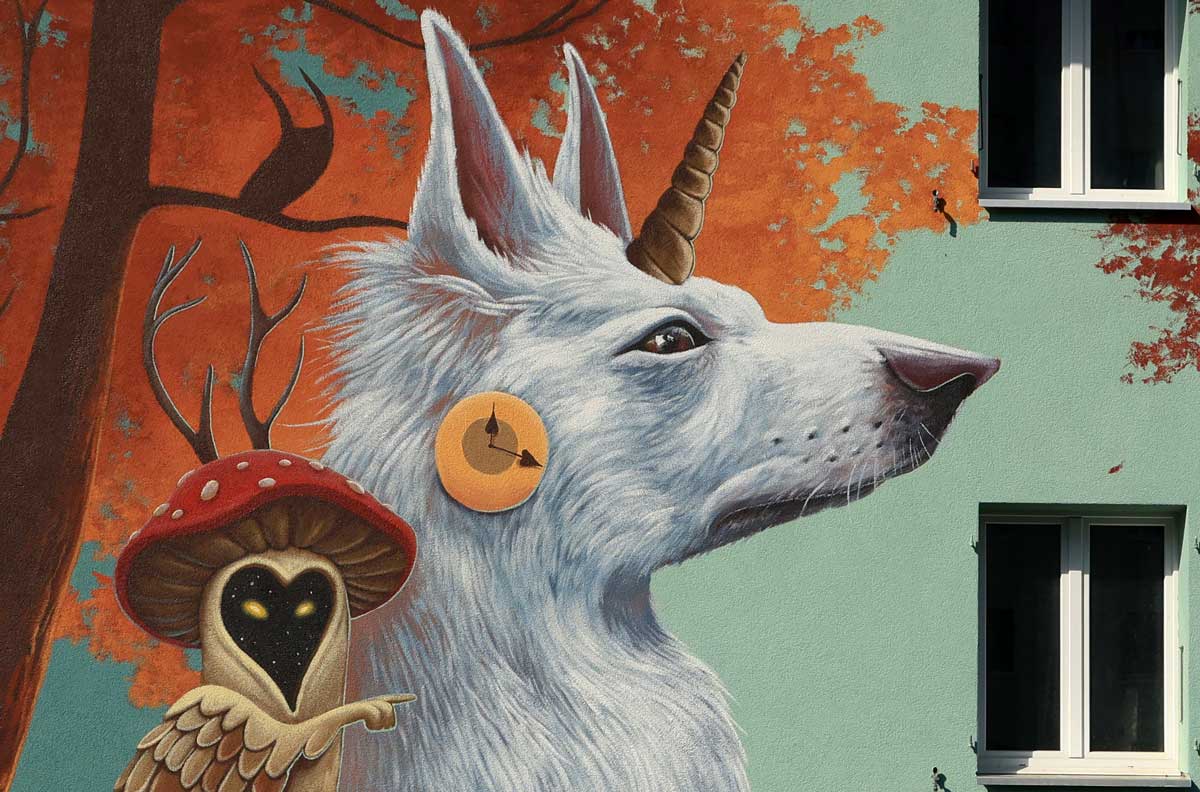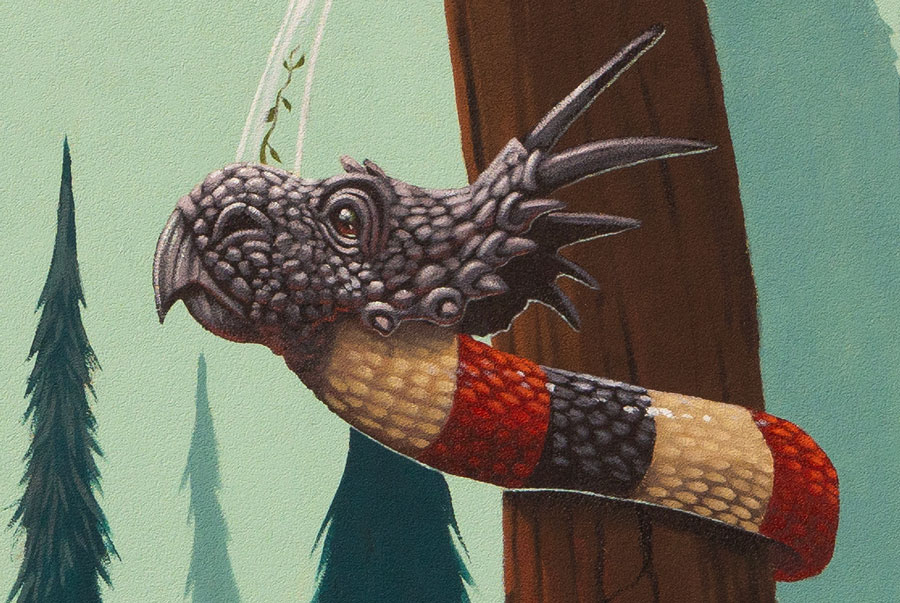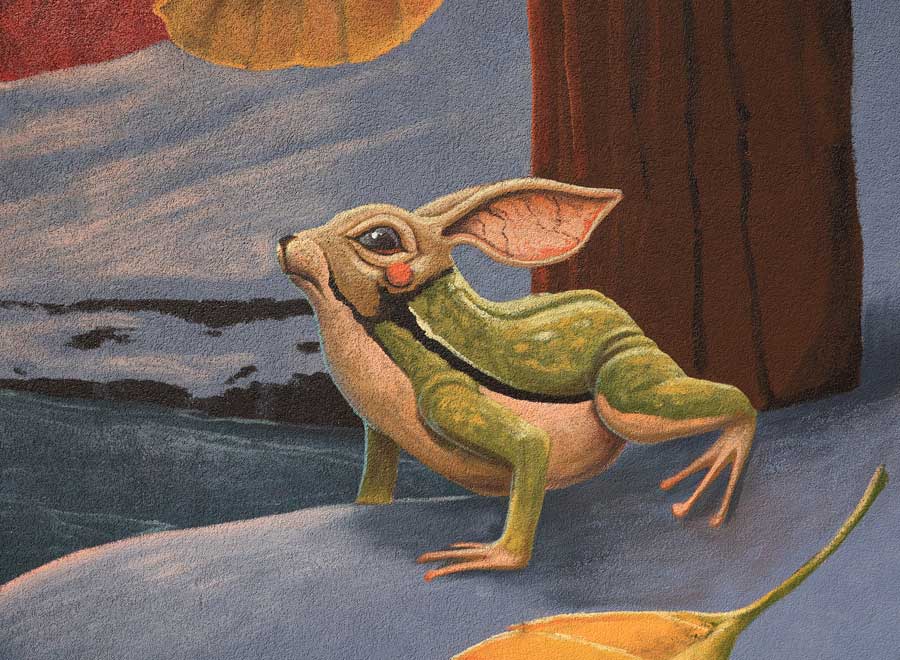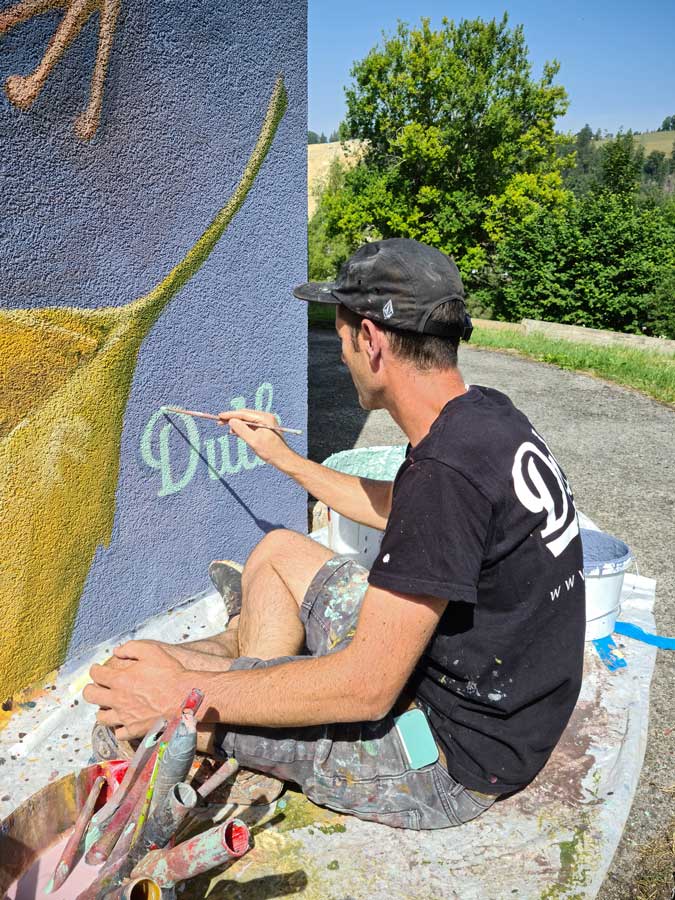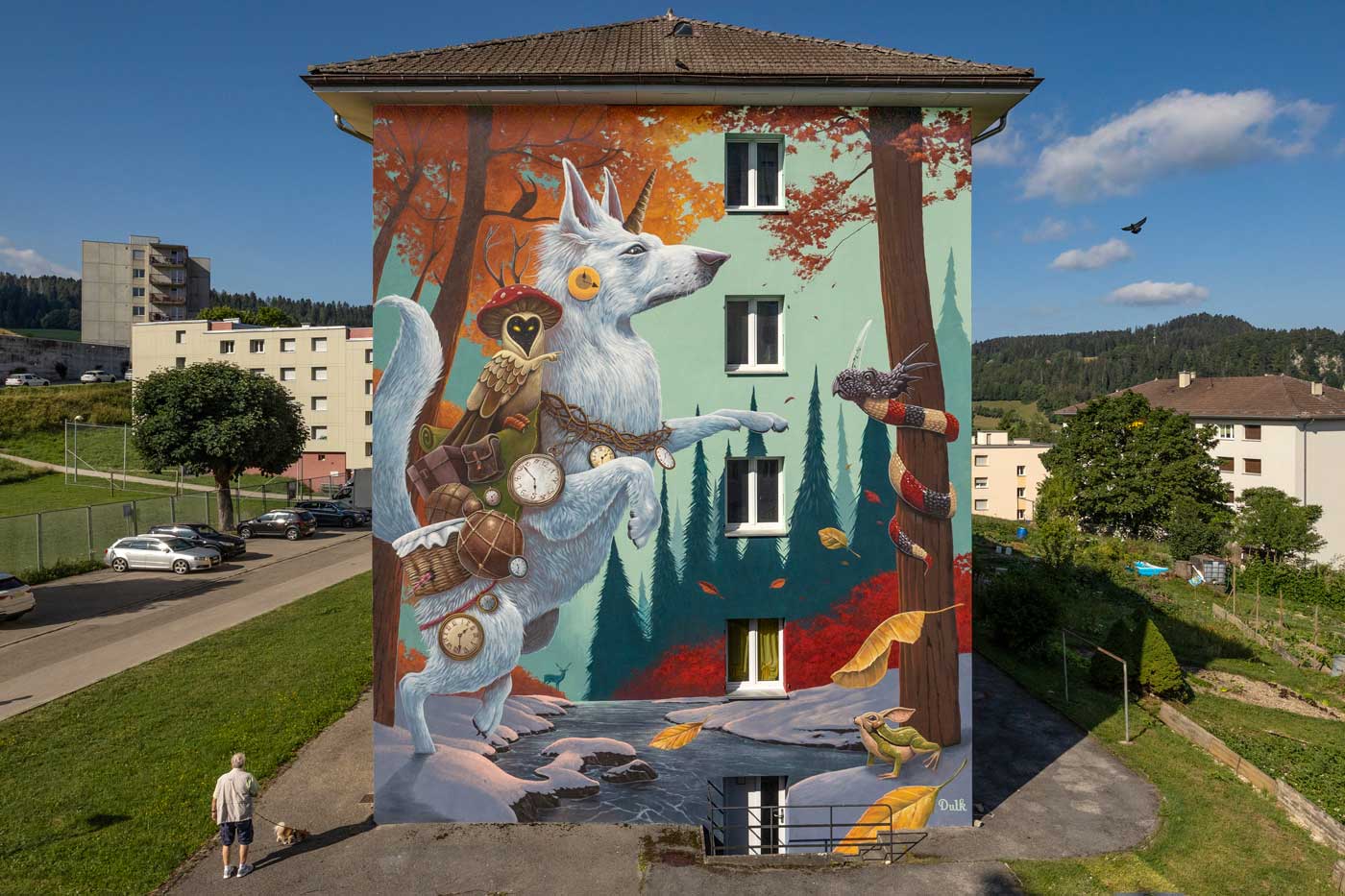Dulk
[E]
- THE WORK -
pirate dog
Title: pirate dog
Technique: BRUSH, ROLLER, SPRAY
YEAR CREATED: 2023
Location: Rue du Tertre 6
Surface area: 110 m2
In 18th century Le Locle, a frontier town, smuggling was commonplace. To avoid paying customs taxes, smugglers used dogs to smuggle goods such as salt, sugar, coffee, tobacco, cloth, gunpowder, matches, playing cards and gold watches. On moonless nights, hungry dogs with saddlebags and spiked collars would run belly-down through the woods, crossing the Franco-Swiss border over the fords of the Doubs.
The exomusée’s collection includes three works exploring the subject of smuggler’s dogs. The first, by Finnish artist Jussi TwoSeven, on display in the Rue de l’Oratoire, is a humorous, anachronistic interpretation of this historical fact. The second, adorning a garage on Rue des Envers, is the work of Mexican artist Mazatl, who focused on the spiritual angle. To close the trilogy, Spain’s Dulk, true to his fabulous style, has transformed the banks of the Doubs into a world populated by chimeras.
By equipping a dog with a unicorn antler, the artist gives the canine the aura of a mythological animal. The dog is on the lookout. Standing on his hind legs, he seems to be searching for his way. Ears perked up, he sniffs the cold air and scans his surroundings. He knows that many perils await him. Fortunately, his guardian angel, a strange owl, is watching over him.
Wearing a mushroom hat, in this case that of a fly agaric, the chimerical bird of prey points to a dragon snake, the embodiment of the many perils that threaten his protégé. After all, the life of a smuggler’s dog is not a quiet & easy one. During their nocturnal gallops, these heavily-laden mutts sometimes tumble off cliffs or are shot dead by customs officers or their master’s rival smugglers, eager to snatch their precious cargo.
Under the psychotropic effect of fly agaric, the « shaman » owl is connected with everything around it. It perceives the visible and the invisible. Its heart-shaped head opens onto the infinite cosmos. Deer antlers add to the creature’s strangeness.
It’s still autumn, but the first snows have already shrouded the ground. Twilight gradually envelops the banks of the Doubs. All that can be heard is the whisper of falling leaves, the splash of water, the dog’s breathing and the cry of crows in the distance. Soon it will be dark, and the hound will take advantage of the darkness to climb the hill and return to his master. On the snow-covered bank, a rabbit frog observes the scene, not afraid to freeze its legs off.
Technical aspects
Dulk created this mural using brushes, rollers and spray paint, after covering the wall with chalk « doodles ». In street art circles, « doodles » are scribbles that serve as visual cues when enlarging a preparatory drawing on a building. By photographing a wall covered with doodles and superimposing this photo on a preparatory drawing (using computer programs such as Photoshop or Procreate), the artist can easily enlarge the preparatory drawing and adapt it to the scale of the wall. This process is far less restrictive than that of squaring a sketch and then reproducing it on a wall, enlarging it while preserving its proportions.
© exomusée – September 2023 – Redaction: François Balmer – Translation: Wolfgang Carrier
Amanita muscaria
Since the dawn of time, humans have experimented with the hallucinogenic properties of fly agaric (Amanita muscaria). The earliest cults of Dionysus were based on the consumption of this mushroom. Northern European and Siberian shamans use it as an entheogen. An entheogen is a psychotropic substance that induces an altered state of consciousness, used for religious, spiritual or shamanic purposes.
Sometimes, primitive shamanism leaves its mark on religions. Thus, before science could explain the effects of psychotropic substances on the brain and central nervous system, the « drunkenness » induced by fly agaric was understood as a manifestation of divine powers. The Mayas of Guatemala associate it with the god of lightning, calling it « kakuljà-inox », meaning « lightning mushroom ». The Berserkers, mythical Viking warriors capable of the most incredible feats, are said to have used it to fuel their fury and sense of invincibility. North American Indians consumed it in shamanic rituals or for recreational purposes. In Lithuania, in certain remote regions, a mixture of Amanita muscaria and vodka is consumed at weddings.
It’s important to note that ingesting Amanita muscaria is not without danger. It can cause severe damage to the central nervous system, and even coma in high doses.
Fly agaric takes its name from its traditional use as an insecticide. In reality, it doesn’t kill flies, but puts them to sleep. In Sweden and England, this fungus is known as « bug agaric ».
For many households around the world, the fly agaric symbolizes good fortune. On a Christmas tree or log, it’s common to see a mushroom-shaped decoration representing Amanita muscaria.
- THE ARTIST -
Dulk

Valencian artist Dulk, Antonio Segura, is one of the most important names in Valencian painting of the moment internationally. His body of work begins to form in urban art and mural painting to which he remains closely linked today along with study work, but does not stop there. He continues to research and constantly create new forms of expression through different media, drawing, sculpture or photography among others. True to its essence with a strong ecological conviction to defend ecosystems and the most vulnerable species this work invites the viewer to be part of a unique imaginarium, full of energy and with a special sensitivity to color. A dream world with animals and natural spaces that tells personal, universal and unique stories.
To print the content of the page, please click on the printer icon.
- The exo -
on the web
Thank you for following and supporting the exomusée on Facebook, Instagram and YouTube!
